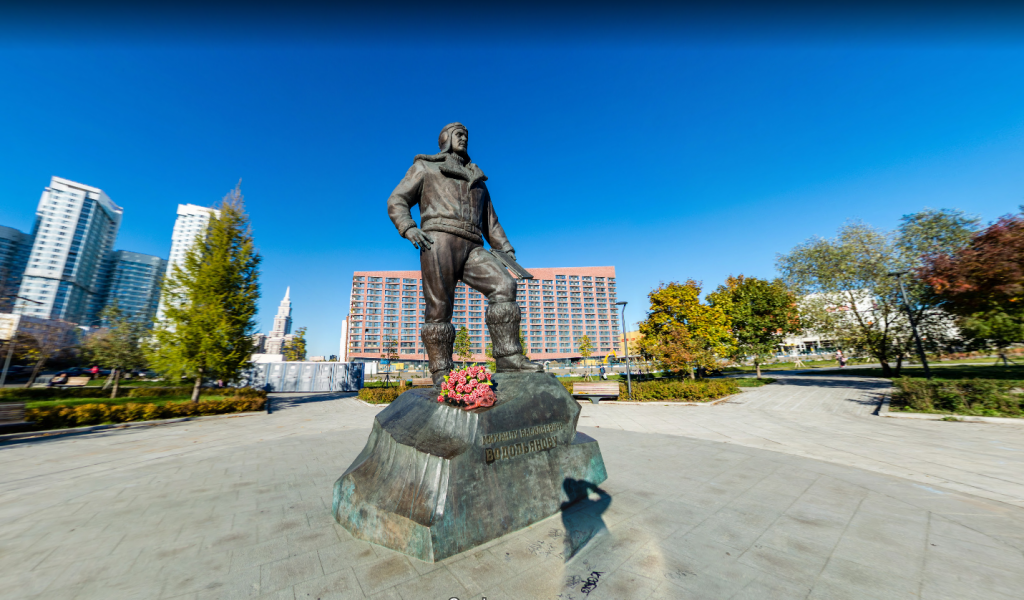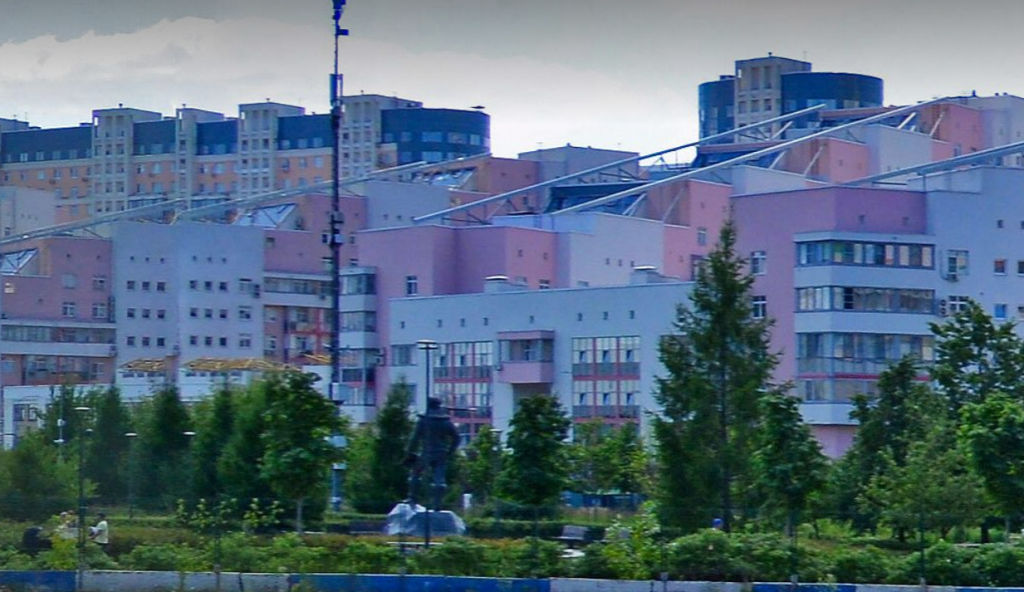Mikhail Vasilyevich
Vodopyanov
1899-1980

Mikhail Vasilyevich Vodopyanov was a Soviet pilot, a participant in the rescue of the crew of the steamer Chelyuskin, a participant in Arctic and high–latitude expeditions, an aviation major general, a member of the USSR Writers’ Union, a member of the USSR Central Executive Committee, the Hero of the Soviet Union. He was born in the village of Bolshye Studenki, the Lipetsk district, the Tambov Province (now it is a part of the city of Lipetsk) in a peasant family. In February 1918, he voluntarily joined the Red Army. He served as a baggage train in the Ilya Muromets Airship Division. He participated in the Civil War, fought against the troops of Aleksander Kolchak and Peter Wrangel. Since 1920 he was a chauffeur’s assistant. Since 1921 he was a chauffeur. Since 1925 he was an aviation engine driver, then a flight mechanic, worked under the guidance of the famous pilot and aircraft engineer Khariton Slavorossov. In 1929 he finished Moscow Flight Technical School. As a flight mechanic, and then as a pilot, he participated in locust control expeditions in the North Caucasus and Kazakhstan. Since 1929 he worked in the management of the Far Eastern Air lines “Transaviation” of the Dobrolet society in Khabarovsk. On January 10, 1930 on a Junkers F-13 aircraft (tail number “USSR-127”), he laid an air route: Khabarovsk – Okha – Aleksandrovsk-on-Sakhalin, called the “Route of Heroes” and having a length of 1130 km. The first flight route was prepared together with the pilot Karl Renkas. In 1931 Vodopyanov joined a special-purpose squadron. He was assigned to deliver the matrices of the newspaper “Pravda” from Moscow to Leningrad and Kharkov (at that time – the capital of Ukraine), so that printing houses on the ground promptly printed the circulation. Then he flew on civilian planes on long–distance air routes Moscow – Leningrad, Moscow – Irkutsk, to Sakhalin Island. In 1932 he conducted aerial reconnaissance of seal rookeries in the Caspian Sea. In the winter of 1933, on a test flight from Moscow to Petropavlovsk-Kamchatsky, his plane crashed in Lake Baikal. Flight mechanic Seregin died, while M.V. Vodopyanov received a concussion and multiple fractures (later only 36 stitches were applied to his head). In 1934, after a long siege of the government commission, he was sent to participate in the rescue of the Chelyuskinites. Together with V. Galyshev and I. Doronin he made a flight of almost 6,500 km from Khabarovsk to Vankarem on an R-5 plane, without a navigator, without a radio operator, through ridges, through mountains, along an incredibly heavy highway. He flew from Anadyr three times to those in distress and took out 10 people. For the courage and heroism shown during the rescue of the Chelyuskinites, on April 20, 1934, he was awarded the title Hero of the Soviet Union with the award of the Order of Lenin. In 1936-1937 he flew to the Arctic, he was the commander of a flight detachment. On May 21, 1937, on an ANT-6 aircraft (the Arctic version of the TB-3), during the first high-latitude Soviet expedition ‘the North’ he landed on ice near the North Pole for the first time in the world, using a braking parachute for the first time. Vodopyanov’s plane delivered a group of winterers who organized the first drifting station “North Pole” (SP-1). For this, he was awarded the second Order of Lenin (the status of twice Hero of the Soviet Union did not exist at that time). Participated in the Soviet-Finnish War of 1939-1940 as a commander of the TB-3 heavy bomber. He made several sorties, was awarded the Order of the Red Banner. On February 2, 1940 he was awarded the military rank of a brigade commander. He was a participant of the Great Patriotic War: since July 1941 – the commander of the 81st long-range bombing Aviation Division. On the night of August 10-11, 1941, he personally participated in the second raid on Berlin (in the same crew with E. Pusep). His TB-7 plane was shot down and made an emergency landing on the territory of Estonia occupied by the enemy. Through the front line, he returned to his own. Vodopyanov’s division lost 7 of the 14 bombers launched in this raid. Following the results of the raid on August 17, he was relieved of the post of division commander as he did not have “sufficient command skills and experience in organizational work necessary in the command of formations.” At the same time, Mikhail Vodopyanov was thanked for his courage, he remained in the division and continued to fly combat missions as an ordinary pilot. In 1941-1943 he fought as a part of the 432nd and 746th long-range aviation regiments. Since September 1943, he was at the disposal of the commander of long–range aviation A.E. Golovanov. Since December 1944 he was at the disposal of the commander of the 18th Air Army. Since February 1946 he was in reserve with the rank of Major General of Aviation. In 1948-1950 he participated in the military high-latitude expeditions “North” and “North-2”. In 1949 he was presented with the second Gold Star medal, but received the Order of Lenin (due to the secrecy of the award). He lived in Moscow. He was a member of the USSR Writers’ Union, actively engaged in literary activity.
Address: Moscow, Khodynskoye Field Park, Alley of Heroes-Pilots

